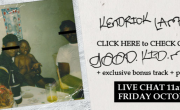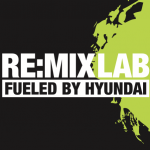By Carolyn Heneghan
In the age of rampant music downloading and streaming programs, our music libraries have grown to unprecedented capacities. Unlike the days spent scrounging your local record store for new vinyls and CDs, music discovery has evolved into regular iTunes searches, “You may also like…” recommendations, and social media shares. The sheer enormity of these pursuits’ results has expanded the breadth of our music libraries exponentially over the last decade and a half.
In short, today’s audiophiles don’t have a curation problem—they have a content management problem.
Many companies and developers have taken on this project of making our mammoth music collections more navigable, with varying degrees of success. Some have tried visual approaches, others based on genres, times, and events. But the HABU music app from San Francisco-based Gravity Mobile aims to achieve something a bit different—mapping out your music library according to moods.
 When you’re pining for a playlist that fits your current actions, emotions, or even desired emotions, shuffle features and Genius playlist can often fall short. As a result, Gravity Mobile developed an app that would organize and visualize your database in such a way that you could discover and rediscover your music library based on a set of pre-programmed mood characteristics.
When you’re pining for a playlist that fits your current actions, emotions, or even desired emotions, shuffle features and Genius playlist can often fall short. As a result, Gravity Mobile developed an app that would organize and visualize your database in such a way that you could discover and rediscover your music library based on a set of pre-programmed mood characteristics.
There are 25 mood categories, and 100 more exacting moods that break up your collection into bite-sized chunks, or “bubbles.” Ranging from “Wary/Defiant” and “Mysterious/Dreamy” to “Cool Confident” and “Edgy/Sexy,” these moods are plotted on a two-dimensional plane along two axes. The x-axis ranges from “Calm” to “Energetic,” and the y-axis between “Positive” and “Dark,” with a host of combinations in between.
After loading your device’s music library, HABU will begin its mood analysis, which takes varying amounts of time depending on your library’s size. This analysis is based on the emotion tags set by the app’s parent Gracenote, a music database company that licenses music and video metadata. The tags are based on a number of specific variables that come together to create the simplified bubble map you see in HABU.
The circles in your library will turn into yellow-green bubbles of different sizes depending on the amount of songs you have that fits into that particular circle’s mood assignment. The more mood-specific songs you have for “Euphoric Energy” or “Tender/Sincere,” the bigger the circle is. Simply click a circle to play the songs relevant for that mood. The only problem is that you can’t see the name of the mood without clicking its circle.
Your unique musical fingerprint will make it quite obvious which types and moods of music you are drawn to, and you may even learn a bit about yourself and your music taste. You can also share and compare your mood matrix with others on Facebook.
The discovery tab is yet another way to find new music suited to your preferences, but this time around based on the mood of the songs you are listening to. You can preview the recommended track and purchase it via iTunes from within the app, and then HABU will automatically file and categorize the new addition within the mood map.
Gravity Mobile released the HABU music app for Android devices in early 2012, and have since followed up with their iOS version this summer. Both are available for $.99 in either the iTunes or Google Play.

















Comments are closed.